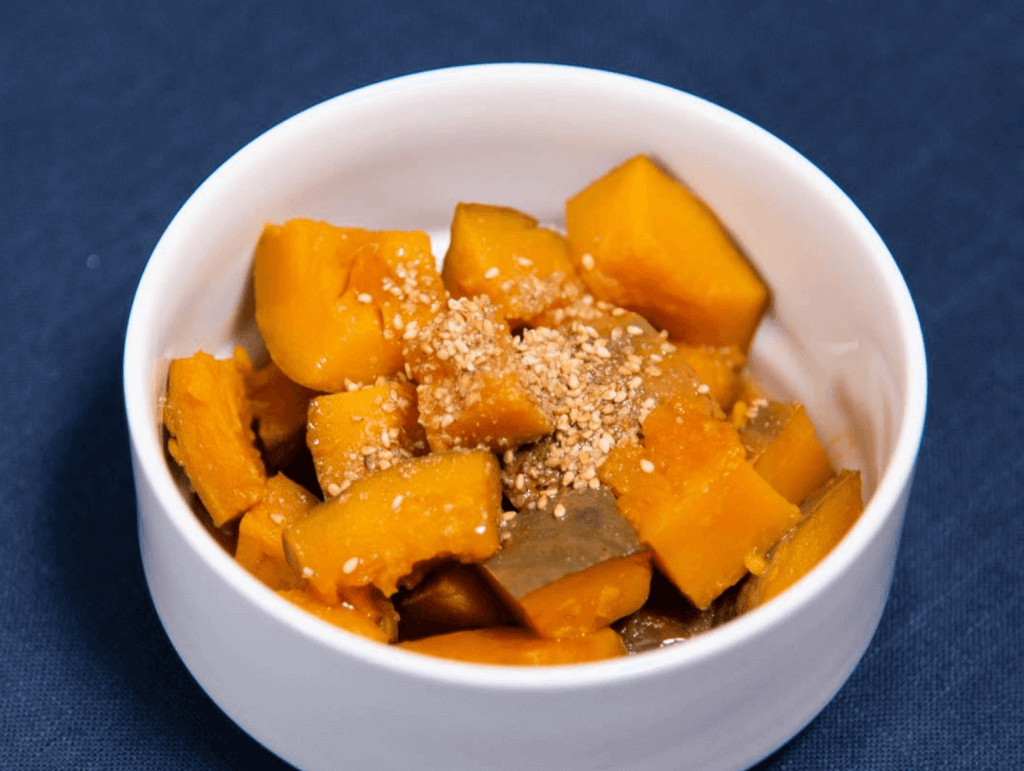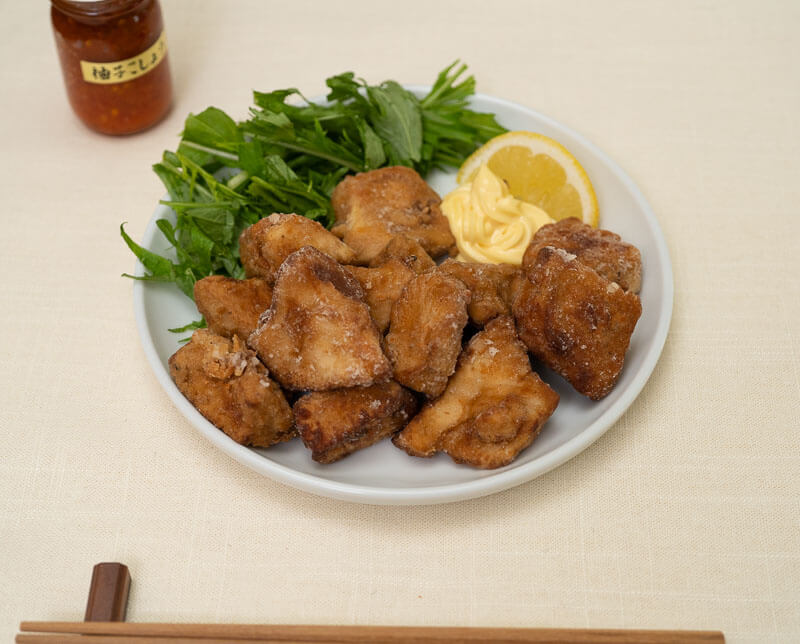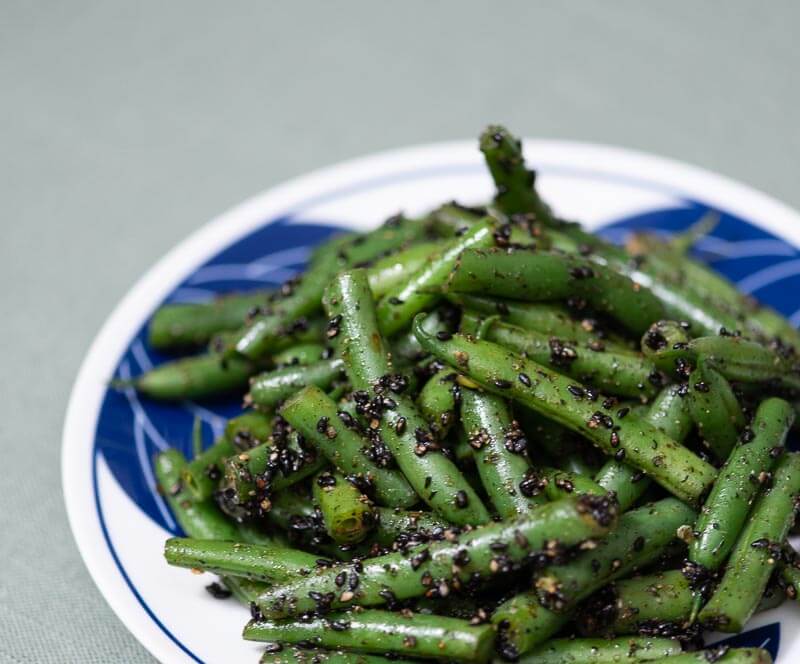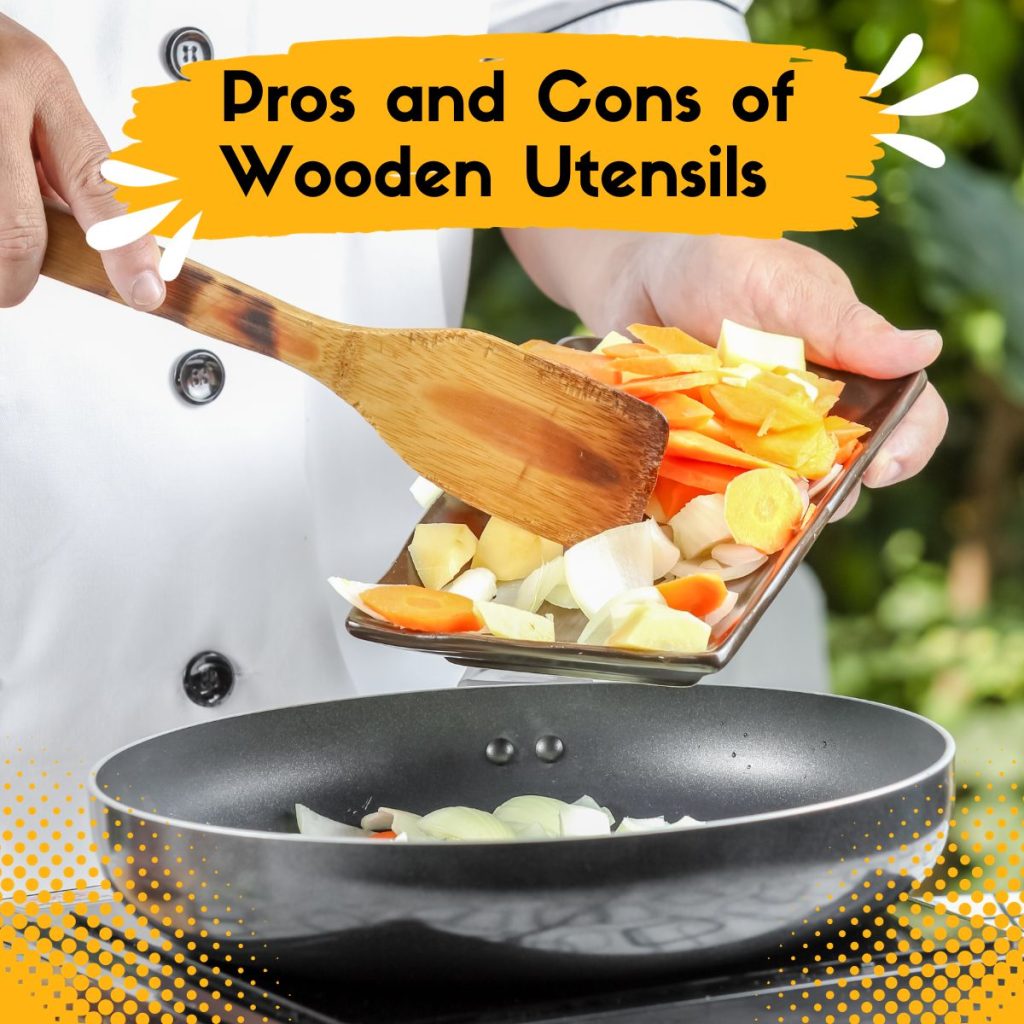5 things to avoid next time you’re making a Japanese side dish, also known as okazu.

Japanese side dishes
We’re gonna be talking about five things to avoid doing next time you make your Japanese side dishes so that they can be a beautiful and delicious success.
Plus, I got a new technique for you to help you remember for the rest of your life.
Even if you can’t read Japanese, you can listen and you can speak, possibly. At least that’s what parents do, right?
Like the saying goes, elephants never forget.
Or do they?
Picking up where we left off, ichiju sansai one soup, three dishes.
Today, we’re gonna be expanding on that with okazu. also known as side dishes.
Japanese side dishes, which come in many different shapes, sizes, forms, flavors, textures, aromas. Simple ingredients, simple cooking, tasty food, tasty times.
That is, if you avoid what I’m about to tell you-

Ohitashi (soy sauce and dashi seasoned vegetables)
So, the first dish that we’re going to be talking about is one of my favorites.
Ohitashi.
Translated the verb ohitasu means to literally soak something.
In this case, we’re gonna be soaking vegetables, like spinach, eggplant, and a variety of other seasonal foods that make for a very delicious side dish or appetizer.
Ohitashi, if you haven’t heard of it before, is basically food that has been simmered in a dashi-based sauce or broth.
It’s very rich and savory in terms of flavor, not necessarily calories.
And if you use vegetables, it’s a great way to enjoy them.
Plus, another benefit is that you can enjoy it all year round all four seasons.
So, if you’d like to cook seasonally with different vegetables throughout the year, you can do so with ohitashi.
And you can do it hot or cold, depending on your mood.
Just like in Japan.
Curious what not to do with ohitashi?
First thing is not garnishing your ohitashi with some sort of an accent.
So, as you can imagine, sometimes, the littlest things make the biggest difference between something that’s just plain and ordinary, versus something that’s more memorable.
And in this case, ohitashi is very, very flexible in terms of what you can put on it.
So for spinach, for example.
Spinach ohitashi is one of my favorite ways to enjoy this okazu or Japanese side dishes.
You can put grated ginger, you can put maybe some katsuobushi, which is the fermented fish flakes.
You can also put on maybe grated sesame or ground sesame, freshly toasted, of course.
As well as anything else that you desire. And just that little accent of flavor tends to bring out a little bit more contrast, another dimension of flavor, which makes a big difference. Even with just a little pinch.
When you make ohitashi, it’s simple to actually use a little bit too much liquid than you actually need to.
And one of the things that you can do to make sure that you don’t do that is to just barely cover the vegetable, or the food, with the liquid so it’s just peeking out from the surface.
That’s what you can imagine your food to be doing. And if you have a lot of leftover liquid, save it for a different variation or a different vegetable, for example.
That way, you can enjoy twice as many vegetables with the same amount of liquid.
And the best way for you to remember this is going to be a little bit of Japanese Onomatopoeia.
As you may know, the Japanese language if full of interesting sounds and today you’ll get to practice!
And it’s going to go something like this, hita hita hita hita hita hita hita…
You can say that as many times as you want. And maybe that’ll help you remember how much liquid you should be using when you make ohitashi.

Nimono (Simmered Japanese foods)
The second, okazu or Japanese side dish, is going to be nimono.
Nimono is literally “simmered thing.” The direct translation of that.
Some of my favorite nimono dishes tend to be things like hijiki, as well as kabocha, and furofuki daikon, which is a simmered daikon radish, which has a savory-sweet miso dengaku glaze on top.
And it’s very, very delicious.
What not to do with your nimono
the first thing not to do when you’re making your nimono is to not let it cool at least one time before you serve it.
If you’re impatient like me, chances are, you’ll never do this. But if you have some patience or some time to wait in-between your cooking and when you’re going to be eating, if you wait a little bit and allow it to cool at least one time, it’s going to help the vegetables especially absorb some of that flavor and some of that umami from the broth.
Maybe you can give it a try and see if you notice a difference between the day when it’s just finished cooking, and then the next day. See if there’s a difference in flavor that you can tell. If you can, maybe it’s something that you want to continue to do. And if you can’t, maybe you don’t need to do it.
So, the second thing not to do is to boil your nimono.
So, nimono, as you know, is something that should be simmered over a long period of time, usually 30, 40, 50, 60 minutes plus.
And that is going to help the vegetables, especially root vegetables or softer vegetables to stay intact. You don’t want them crumbling apart or dissolving.
So, things like kabocha squash, potato, any of those starchy vegetables, have a risk of dissolving and breaking off into little pieces in your broth, which is going to not only cloud it, but it’s also going to change the texture.
No good.
So, how would you remember not to boil your nimono?
Well, here is how.
koto-koto-koto…
It should be making a very gentle noise kind of like that.

Agemono (deep fried Japanese food)
The third Japanese side dish that I love to eat as part of a meal is agemono.
Agemono translated to English is literally ‘fried food’.
And there’s all kinds of different fried foods that are just waiting for you to discover in Japan if you’ve never been there.
And if you have been there, you know what I’m talking about.
Some of my favorites include agedashi tofu, which is a tofu that’s been cooked in a dashi broth, or fried, and then added to dashi broth.
There’s also tempura, there’s also karaage, and many other types.
Yes, the Japanese fry a lot of foods.
Does that surprise you?
Bikkuri shita?
What not to do with agemono
When it comes to agemono, the first thing not to do is to put so much of agemono into your meal.
So, if you’ve ever seen a traditional Japanese meal, you’ve noticed that maybe they have very small portions.
And sometimes, when it comes to side dishes, it’s just like two or three bites. So, definitely be on the conservative side when it comes to agemono or fried foods because they tend to be heavy and oily.
So, the second thing not to do with your agemono or fried foods is to microwave it. Yes, the microwave is convenient. It’s fast. It’s effective in reheating your foods. But when it comes to fried foods, it’s just not going to result in the same texture that it had initially when it came out of the fryer.
If possible, use a toaster to reheat it the next day when you’re ready to eat it. And that way, you’ll preserve some of that crunchiness of the fried food, the outside part of it, and it’ll make for a much more pleasant texture, at least in my experience.
And similar to pizza, if you’ve ever toasted your pizza versus microwave it, maybe you’ve noticed that the crunch of the crust is a little bit more evident when you toast it. And if that’s something that you’re into, maybe that’s something you want to try with agemono or Japanese fried foods.
Oh yeah. And a bonus tip about frying foods before we get into the way that you’re going to remember this is to always use a paper towel or wire rack, and/or a piece of paper to soak up that residual oil.
How are you going to remember this?
Pari-pari pari-pari pari-pari….
A crunchy noise that you might make when you’re biting into something that has been fried.

Goma-ae (sweet savory sesame soy sauce)
So, the fourth Japanese side dish that we’re going to be talking about is goma-ae.
Goma-ae is a sweet, savory, soy sauce-based, and sesame-based seasoning that you can use to season your vegetables.
And it’s extremely delicious and simple to make.
Whether they’re steamed, blanched, boiled, microwaved, well, here’s what not to do.
What not to do when making goma-ae
The first thing is don’t buy store-bought, pre-made mixes for goma-ae.
They’re very convenient.
All you got to do is open the package, sprinkle it on, and mix it right in.
Some people may like it but for me, the taste and flavor is going to be a disappointing experience.
And it’s one of the easiest things that you can make at home.
Literally.
You just need to mix some toasted ground sesame seeds, a little bit of sugar and some shoyu, soy sauce, plus or minus some sesame oil if you want additional aroma, and that’s it.
Make the sauce from scratch and it’s going to be incomparably better.
If you are blanching your vegetables, make sure to squeeze out all of the extra water that might be stuck in the vegetables so that you don’t dilute your sauce.
The third thing not to do with the goma is if you’re not going to eat it right away, try to keep the seasoning and the vegetables separate until just before you’re about to eat it.
Because if you don’t do that, then the seasoning is going to draw out some of that moisture that’s in the vegetables, and it’s going to dilute everything and make it nice and watery, and unfavorable.
Giri-giri, giri-giri-giri means just barely, or at the very last moment.
So, that’s going to be the way you can remember that.

Japanese Style Salads (Sarada)
The last okazu or Japanese side dish that we’re going to be talking about today is sarada.
Sarada or Japanese style salads, which comes in many shapes, sizes, and forms. Just like the first thing that we talked about today.
We’re going to be talking specifically about salads that have been made with mayo-based dressing.
Now, don’t throw your hands up and go, “Oh my god, mayo.” Mayonnaise can be actually plant-based.
And if you haven’t had it yet, there are a few alternative mayos that I would recommend trying.
One is going to be an avocado oil-based, and the other one is going to be something called Veganaise.
But you can find it probably at your local store. Whole Foods has it.
Amazon may carry it as well. And it’s not too bad.
Definitely doesn’t taste like kewpie mayonnaise, which is the most famous Japanese mayonnaise.
But if you’re willing to compromise there for something that is plant-based, no eggs, then might it be worth a try.
At least if you’re trying to be plant-based and eat more plant based products. And if you’re not, then maybe you can stick with kewpie.
Totally up to you.
So, the second point with mayonnaise is to use a little bit of acid.
Acid is going to help to liven things up and bring out some of the flavors that you may not have noticed before.
And it makes a big difference. Even just using a little bit of rice vinegar, osu, or black rice vinegar, kuro osu, or maybe even some lemon juice, helping to change things up, add a little bit of complexity, and it might just be something that makes a difference between a standard dish and something that’s “Oooh! Umai!”
How are you gonna remember this?
Sappari Sappari Sappari….

japanese side dishes | 5 things to avoid doing with okazu video
enjoy the video? make sure to subscribe so you dont miss any of my newest japanese cooking videos!

Konnichiwa! (Hello!) I'm Pat Tokuyama, a Japanese tofu cookbook author, who travels for music, food, and adventure. If you like Japanese tea, checkout some of the newestorganic japanese tea, matcha bowls and noren and more!
** Curious about the Plant Based Japanese Cooking Club? ** Learn more here!
what’s your favorite Japanese side dish?
We talked about five of my favorites.
And if you haven’t had any of these before, which one would you try first?
The first one, the second one, the third one, the fourth one, or the fifth one? Let me know in the comments with a 1, 2, 3, 4, or 5!






Konnichiwa! (Hello!) I'm Pat Tokuyama, a Japanese tofu cookbook author, who travels for music, food, and adventure. If you like Japanese tea, checkout some of the newestorganic japanese tea, matcha bowls and noren and more!
** Curious about the Plant Based Japanese Cooking Club? ** Learn more here!